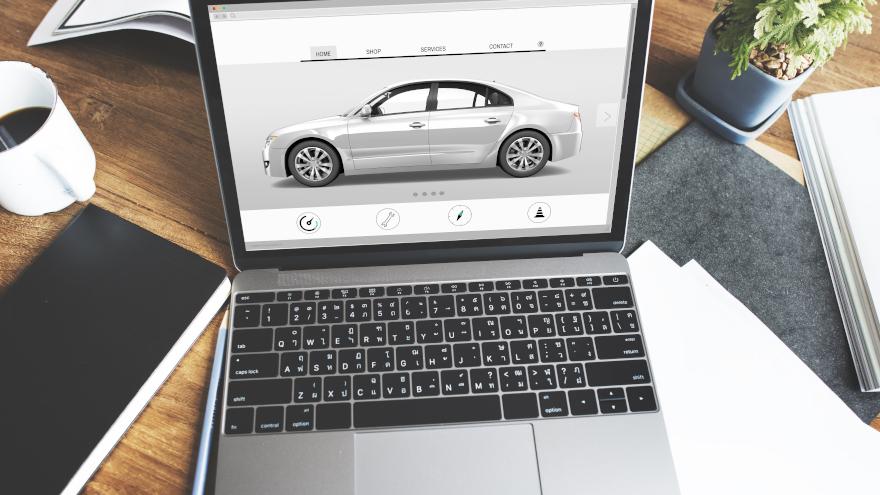COMMENTARY: The Digital Dilemma — How to rethink sales & delivery to drive a successful car-buying future

The tide is shifting when it comes to how cars are marketed, bought and sold.
A wide range of factors have led to the evolution of an industry that used to require a buyer to visit a dealership, take a test drive, hammer out a deal, take delivery and drive away.
At the top of the list are new technologies that put searching for and choosing a car at a buyer’s fingertips. Relative newcomers to the industry, such as Carvana, allow consumers to buy cars on their smartphones and have them delivered to their driveways, eliminating the time-consuming tasks of the old-fashioned approach.
On top of that, younger buyers increasingly view cars as a necessity, strictly for transportation, rather than an extension of their lives and personalities. That disconnect has led the acquisition of a vehicle to be more transactional and less emotional, paving the way for a process that’s simpler and less time-consuming.
Considering the buying preferences of today’s automotive consumer. Dealerships that don’t evolve with the times will face an existential threat. But all is not lost: by taking the right steps, traditional car dealers can still compete, win and flourish, even as digital sales become more prolific.
Although the operational processes of running a car dealership are vast, there are three fundamental areas where today’s competition has truly changed the game. Focusing on rethinking these primary processes will help set dealers on the right course and continue attracting car buyers.
Pre-sale vehicle inspections
Given the substantial investment required, trust is a non-negotiable factor in closing a car sale. The traditional car-buying method involves going to a dealership lot, looking at a car, driving it around, and then deciding whether or not you want it. The dynamic changes when a buyer is making a car purchase digitally.
In spite of that, buyers still want the same level of assurance that their investment is sound and worthwhile. A well-crafted vehicle inspection program provides the peace of mind buyers want and establishes a trusting relationship that could lead to future sales. It’s essential to take the time to develop a reliable vehicle inspection program that clearly communicates that the car being considered is mechanically sound.
In some cases, dealers might choose to develop an inspection program from the ground up, but plenty of third-party companies offer turnkey solutions that just need to be integrated into the dealership’s systems.
Online checkouts
Selling a car by traditional means involves a significant amount of paperwork and signatures. Even if the paperwork is digitized, as most is today, it still must be completed by sitting face-to-face at a desk. Reimagining the entire sales flow might be the hardest part of the entire process, especially since dealerships still want to continue to make the same margins they do today.
But the fact remains, creating an online checkout process for a car sale is necessary in order to remain competitive. Dealers offering online checkout must have a system that ensures compliance for whatever state the customer is buying from, but they also must find a way to maintain the margins they see during different stages of the traditional process.
The good news is that solutions for adopting an online checkout process exist, in many cases from technology companies whose sole mission is to help dealers tackle this exact problem. They even incorporate ways for dealers to upsell through the online checkout process, protecting the profits that would otherwise be lost when a customer does everything online.
Home delivery
Customer expectations have changed. Home delivery is now the norm for everything from consumer products to groceries to cars. How does a customer take delivery of a car they’re not coming to pick up?
Plainly, it’s up to the dealership to provide the means to deliver it. Some of the companies that have entered the car sales industry over the recent past were built with that delivery mechanism as part of their businesses, but traditional dealers don’t have that same infrastructure in place. The problem becomes even more pronounced when a buyer is five states away. So how do dealers fill that gap?
In some cases, dealers may choose to create their own delivery programs, but that’s not likely feasible for most. In other cases, partnerships may emerge that establish the ability to conduct on-demand deliveries. Either way, delivering cars to buyers at their locations is quickly becoming the new norm, and it’s an essential aspect of competing with the evolving industry.
In conclusion, the automotive industry is evolving rapidly, and to remain competitive, traditional dealerships must adapt. The rise of digital sales channels, coupled with shifting consumer behavior, underscores the importance of rethinking traditional sales and delivery processes.
By focusing on developing reliable vehicle inspection programs, incorporating online checkout processes, and offering home delivery services, dealerships can attract and retain customers, build trust, and remain relevant in an industry that is increasingly digital.
The good news is that solutions exist for dealerships looking to streamline their processes, protect their margins, and compete in an ever-changing landscape. The key is to take the right steps now and stay ahead of the curve.
Jonathan Stott is shipper product lead at Ship.Cars.

 View The Latest Edition
View The Latest Edition

